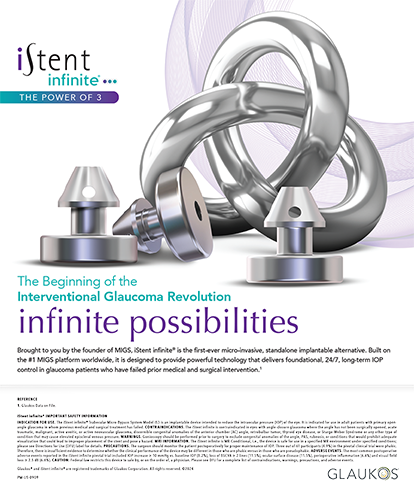An unhappy or angry patient is a person all surgeons performing refractive surgery will at some point have to deal with. It is incumbent on us as physicians to approach such a situation with the level of calm and professionalism that the patient is expecting. There may be things that you want to say but should not. The best advice is to let those thoughts pass.
WHAT MAKES PATIENTS UNHAPPY?
Many factors can make a patient unhappy. These include unrealistic expectations, poor recollection of what he or she heard during the preoperative consultation, a negative result, presbyopia, and events in his or her personal life (particularly financial concerns and guilt after a costly procedure). Age is another factor. Some patients may believe they will feel 20 years younger following surgery, and then the reality sets in that they did not drink from the “laser of youth.” Additionally, the onset of depression can certainly affect every aspect of an individual’s life.
Although these factors may seem very obvious, it is interesting how surgeons forget and ignore them in an attempt to suppress their own frustration, anger, and animosity. It is important to remember, this is not about the physician or anything he or she did. Myriad other things play a part in a patient’s happiness with the result.
PREVENTIVE MEASURES
Some steps should be taken preventively, not only to avoid potentially unhappy or angry patients, but also because it is good practice. Make sure to clearly explain the procedure and its potential outcomes, risks, and complications in as many ways and using as many educational aids as possible. Document, document, and document again the discussions that you and your staff have with the patient regarding outcome and risks. It is amazing what people think they hear and their recollection of what you say.
It is also valuable to have the patient initial a checklist of all of the risks that you have gone over. I believe that one of the most important preoperative discussions is that pertaining to the patient’s reading vision and the presbyopic process. Presbyopia and reading vision are often poorly understood by patients, and poor reading vision is one of the leading causes of postoperative dissatisfaction. Spend the time to make sure that the patient is on the same page as you are regarding his or her expectations of reading vision.
POSTOPERATIVE DISPLEASURE
Let us say that you have done a great job of educating the patient. He or she has a 20/20 result but comes to your office very unhappy. How do you handle this patient? Do not follow your first instinct; it will only land you in jail! My advice is to listen, listen, and then listen some more. The patient really wants to know that you are hearing what he or she is telling you, that you understand his or her issues, and that you are a partner in his or her care and outcome. If you can achieve this little bit of rapport it will go a long way to helping the patient resolve the perceived problem. Try to be an advocate. Test and retest the patient so that he or she realizes you will leave no stone unturned in trying to understand and resolve the issues. These few steps will resolve most situations, particularly if the patient believes you hear what he or she is saying.
WHAT COMES NEXT?
What if you have listened and tested to no avail, and there really is nothing you can find that is tangible, objective, and correlates with the patient’s symptoms? Obviously if there were a quantifiable issue, you would offer an enhancement. There may be, however, a patient who does not have a true postsurgical problem but rather something else is going on and he or she has become fixated on his or her vision and refractive surgery. In those cases, I find it helpful to have the patient talk to someone else in the office. For example, your administrator or another staff member who has had refractive surgery may be able to lend a sympathetic ear. Speaking with someone to whom the patient can relate frequently goes a long way toward assuaging his or her concerns.
Another avenue of resolution is to suggest that the individual seek a second opinion, preferably from someone with whom you have a respectful, collegial professional relationship. It can be very beneficial for patients to hear that they have a good result, nothing seems out of the ordinary, and they should continue their care.
CONCLUSION
The problem of the angry or dissatisfied patient is a difficult one that we are all forced to face at some point in our refractive practices. As a surgeon, you should avoid the pitfall of taking this as a personal affront to your talent or expertise. Realize that, often, unhappy patients can be made happy with surgical enhancements. If the problem appears to be caused by something happening in the patient’s life unrelated to the surgical procedure and outcome, however; be thoughtful, kind, a good listener, proactive, and a partner in his or her visual success.
Michael Gordon, MD, is a partner in the Gordon & Weiss Vision Institute in San Diego. Dr. Gordon may be reached at mgordon786@aol.com.


